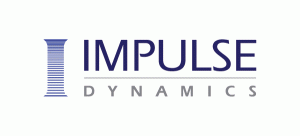My Portfolio
CLICK HERE to browse through descriptions of the implantable devices that I have developed
Important Disclaimer: The sole purpose of this page is to showcase the implantable device projects that I have led. The views presented in these pages do not necessarily reflect the views of my past or current employers, collaborators and/or clients. This information does not supersede original manufacturer’s specifications or constitute medical advice or advertisement. Trademarks and logos belong to their registered owners.
I have been developing implantable medical device systems since 1994.
I was an engineer at Intermedics (Angleton, TX) between 1994 and 1998. I was in charge of design and development of Intermedics’ next generation implantable cardiac pacemaker (NEXUS). I defined the architecture and chipset for this next-generation implantable hardware platform, and specified and managed the development of fully custom analog, digital, mixed mode VLSI and MEMS integrated circuits.
At Intermedics I also did applied research, and developed protocols for assessing the hardness of implantable integrated electronics against therapeutic ionizing radiation. I also developed and tested novel technologies, circuits, sensors and methods applicable to implantable cardiac stimulators, along with analytical methods and instruments for in-vivo animal and human evaluation of new technologies (leads, implantable electrodes, cardiorespiratory and hemodynamic function sensors, therapies).
In 1998 I joined Prof. Shlomo Ben-Haim’s Impulse Dynamics to develop the company’s implantable devices for the treatment of heart failure. I developed the concept, core circuitry and control algorithms for all 5 generations of implantable cardiac contractility modulation (CCM) systems.
At Impulse Dynamics we discovered that the same type of non-excitatory signals used for cardiac contractility modulation could be used to control other excitable tissues. MetaCure was spun-off Impulse Dynamics in 2008. I was in charge of developing MetaCure’s two generations of platforms (Tantalus I for the treatment of obesity, Hyperion for the treatment of Diabetes, and Tantalus II for the treatment of metabolic syndrome).


